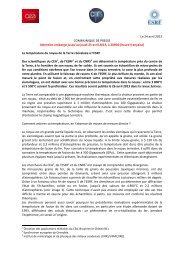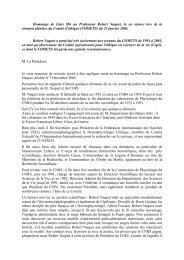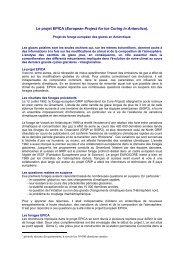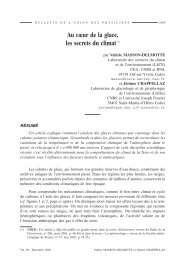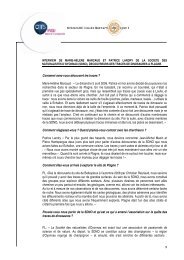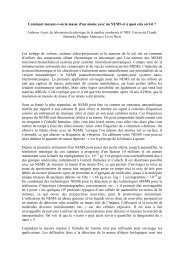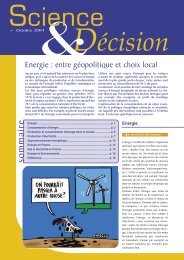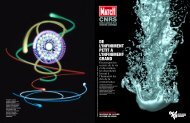The ASTRONET Roadmap: Strategic Planning for European ... - CNRS
The ASTRONET Roadmap: Strategic Planning for European ... - CNRS
The ASTRONET Roadmap: Strategic Planning for European ... - CNRS
- No tags were found...
Create successful ePaper yourself
Turn your PDF publications into a flip-book with our unique Google optimized e-Paper software.
Space MissionsAlthough important national and multinational space projects are being developed outside the ESA structure and the<strong>Roadmap</strong> also encourages the continued development of fast-track smaller missions, ESA’s strategic planning, mostrecently the Cosmic Vision exercise, dominates the development of major scientific space missions in Europe. Regardlessof scientific merit, only a couple of new L-class (Large scale) and a very few M-class (Medium scale) missions are likely tobe selected or implemented in the next decade within the Cosmic Vision plan; mission proposals are currently undergoingmajor changes and trans<strong>for</strong>mations be<strong>for</strong>e the final selection is made. <strong>The</strong>ir overall impact depends on maintaining astrong science programme at ESA.<strong>The</strong> <strong>Roadmap</strong> Working Group and Panels independently agreed with ESA’s initial selection of Cosmic Vision missions. Allthe proposed missions were judged to be of high scientific value. <strong>The</strong> final choice of missions by the standard ESA reviewand down-selection procedures, which track changes in mission scope and cost and possible mergers with, or replacementby, other <strong>European</strong> or international projects, is there<strong>for</strong>e broadly supported. Within this framework, our priorities,including some non-ESA missions, are as follows:• Among the large-scale missions, the gravitational-wave observatory LISA and the X-ray observatory XEUS/IXO wereranked together at the top. Next were the TANDEM and LAPLACE missions to the planets Saturn and Jupiter and theirsatellites. One is likely to be selected late in 2008 and will then compete with IXO or LISA <strong>for</strong> the next L-slot. ExoMarswas ranked highly as well, but below TANDEM/LAPLACE and does not compete with the others as it belongs to a differentprogramme (Aurora). <strong>The</strong> longer-term missions Darwin (search <strong>for</strong> life on “other Earths”), FIRI (<strong>for</strong>mation and evolutionof planets, stars and galaxies), and PHOIBOS (very close-up study of the solar atmosphere) were also deemedvery important but still require lengthy technological development. It was regarded as premature to assign a detailedpriority ranking to these three missions at this stage.• Among the medium-scale missions, scienceanalysis and exploitation <strong>for</strong> theastrometric mission Gaia was rankedhighest, followed by the dark energy missionEUCLID and then Solar Orbiter. Next,with equal rank but different maturity, areCross-Scale (magnetosphere), Simbol-X(a non-ESA X-ray project), PLATO (exoplanettransits) and SPICA (far-infraredobservatory). Below these in priority isMarco Polo (near-Earth asteroid samplereturn).Left: ESA’s Gaia spacecraft: artist’s impression.Credit: ESARight: <strong>The</strong> young, star-<strong>for</strong>ming Tarantula Nebula inthe Large Magellanic Cloud. <strong>The</strong> colours show thelocations of the many massive, hot young stars andthe heated and ionised regions they have carved outof their natal gas cloud.Credit: ESO/ J. Alves, B. Vandame, Y. Bialetski, R. Fosbury6



